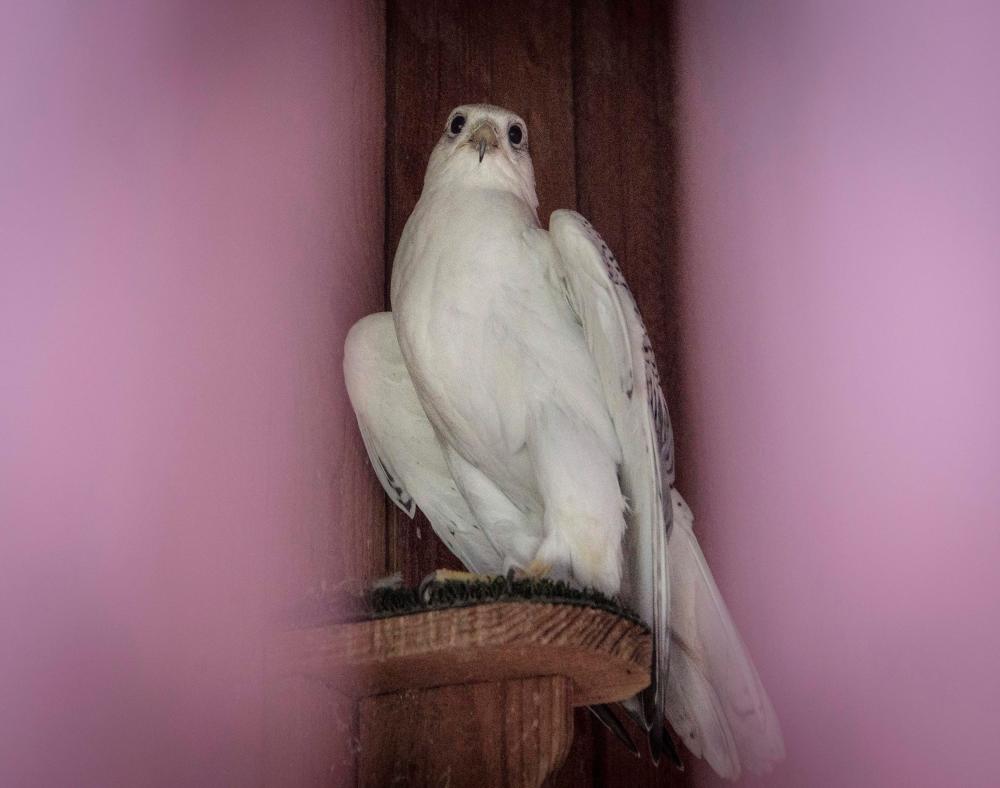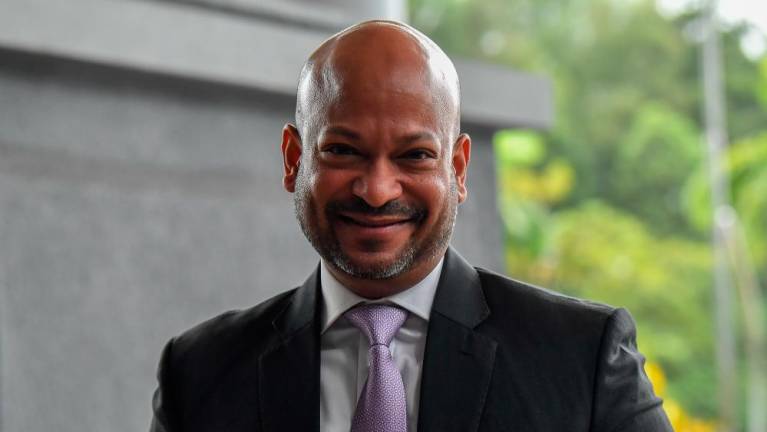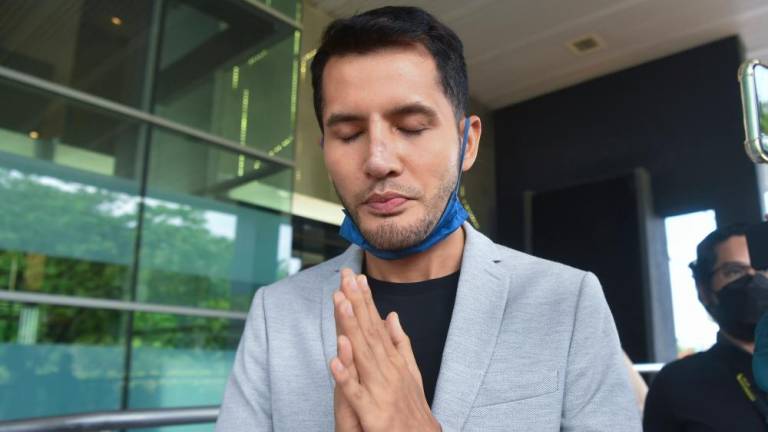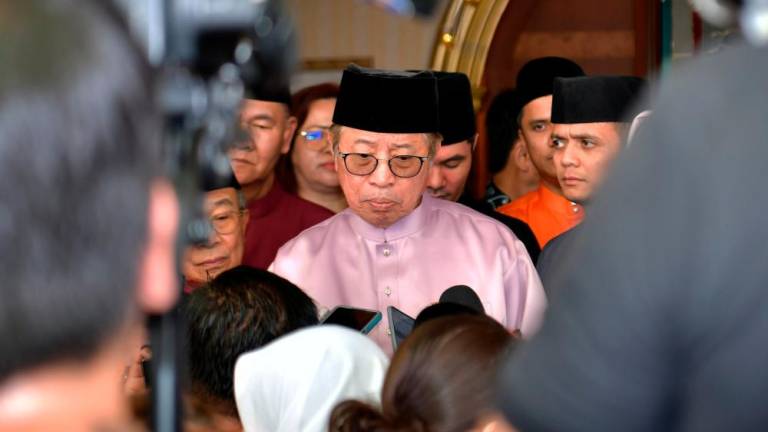MOSCOW: The king motions for the white falcon to be brought closer and reaches out to stroke its chest, smiling as the bird blindly swivels its head, a hood covering its eyes.
Russia’s Vladimir Putin this month engaged in some falcon diplomacy on a Middle East tour, gifting prized gyrfalcons to Saudi King Salman and Emirati Crown Prince Mohammed bin Zayed Al-Nahyan, a falconry enthusiast.
In Russia, however, Arab interest in falcons has a dark side, with out-of-control poaching and smuggling to the Gulf region, where they find an eager market thanks to deep-rooted hunting traditions.
Gyrfalcons, the largest species of the predator once prized by Russia’s tsars, breed in northern climates and are sought after for their size and intelligence.
Now a massive Kremlin-backed project to breed and export gyrfalcons, or gyrs, has alarmed scientists as a possible future scheme to smuggle wild birds.
‘Forbidden fruit’
Gyrs are not endangered, but trade in the birds and their cross-border shipment require permission from the Convention on International Trade in Endangered Species (CITES).
They are protected in Russia, where the illegal capture of gyrs can lead to a four-year prison term.
Poachers lure falcons to snares with live bait, then swaddle and hood them.
Smugglers stuff the birds into old radios, car seats, or even down their trousers, before boarding a plane or crossing the border by car, according to official reports.
Many of the birds do not survive the trip to the Gulf. Others die from disease in the desert climate, but enough reach buyers — not at fairs but at invitation-only sales in private homes, says US-based breeder Brad Wood, who sells falcons to Arab clients.
“Wild-trapped gyrs are the forbidden fruit” and fetch up to $100,000 (RM418,450), he said.
“Most of us breeders know that many young Russian gyrs have been smuggled from Russia to the Middle East” to hunt and breed, often to produce heat-resistant hybrids.
Gyr specialist Yevgeny Lobkov said poaching on an “industrial scale” has gone on for decades in Russia’s far-eastern Kamchatka region, where a higher percentage of gyrs are white, fetching higher prices.
Lobkov estimated that hundreds are taken every year from Kamchatka, where he works. Poachers are well-equipped and work out in the open, parking their cars along major roads.
Smuggling cases rarely reach trial. In 2013 a man was caught by Russian customs with 29 birds but disappeared after the United Arab Emirates (UAE) embassy paid his bail, local media reported.
Factory farm
Russia’s environment ministry in October announced that a new centre will be built in Kamchatka with the goal of breeding 1,000 gyrfalcons a year, with plans for five more to “replenish Russian gyr populations” decimated by poaching.
A facility this size would be the biggest in the world, effectively a “factory farm”, said UK-based biologist and falcon breeder Nick Fox, who has worked in the Gulf region.
Kremlin spokesman Dmitry Peskov praised the centre as “fantastic”, calling it a “business project” — which suggests the falcons will be exported to the Gulf.
Emirati Environment Minister Thani al-Zeyoudi told the Russian RT channel last month that construction will start “in the coming months” in what he called a “partnership” with Russia.
Shukhrat Razakov, who is set to head the new centre, handled the two white birds on Putin’s Gulf trip.
But for a facility of such size and government involvement, the project is mysterious, with the environment ministry declining to provide details when contacted by AFP. Several Russian ornithologists said it could adversely affect endemic falcons’ gene pool.
Falcon contraband
Internationally, commercial trade of gyrfalcons is allowed only of birds bred in CITES-registered facilities. It is not clear where the Kamchatka centre would get such birds.
Razakov also runs a breeding facility in Kyrgyzstan, where 200 gyrfalcons were flown in from the Emirates in 2017, according to its Instagram account.
He owns the Muras facility, which is not CITES-registered, with Rashid Al Kindi of the UAE and Russian Oleg Sharykin, who runs a cement business, according to the Kyrgyz justice ministry.
The company has no website, and did not respond to questions sent via Instagram.
Fox, the UK breeder who worked on falcon conservation in Kyrgyzstan, has not heard of Muras, but called the Central Asian state a “perfect place for bending CITES regulations”.
Sergei Ganusevich, a gyrfalcon specialist who advises Russian customs on smuggled birds, said the new centre will likely be launched with birds from Kyrgyzstan, in violation of CITES rules.
He called the project “corruption-prone, environmentally dangerous and biologically unfounded.”
If Razakov’s gyrfalcons are indeed natives of Kamchatka, they can only be contraband as “there have never been legal shipments of gyrfalcons from Russia.”
If the gyrs are from elsewhere, Ganusevich said bringing them to Kamchatka would introduce their genes to the native local birds, which goes against conservation ideals.
Ganusevich added that locating a breeding centre in rugged Kamchatka smells like a plan to “launder” more desirable wild birds from local nature.
A known smuggling trick is using fake export papers to pass off wild falcons as birds from breeding facilities.
Russia is the only country that has failed to stop the smuggling of wild falcons, said Ganusevich, who has sent two letters to Putin protesting the planned breeding centre.
Instead of building huge falcon farms, “all you need to do is to eradicate poaching and contraband, and the gyrfalcon will be fine,“ he said. — AFP













